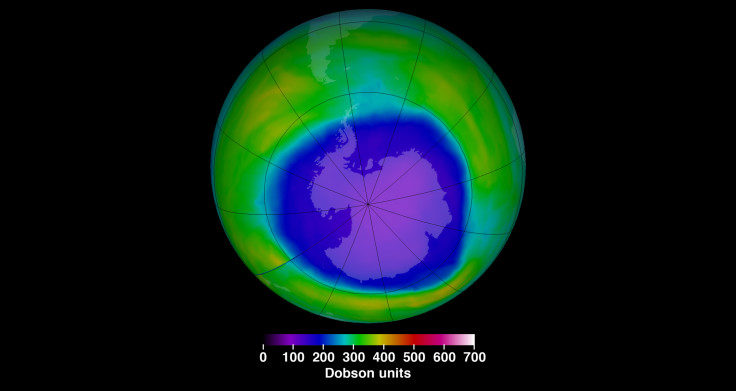Ozone Hole Shrinks To Smallest On Record, Are We Winning Fight Against Killer Chemicals?

The hole in the ozone layer over the Antarctic this year is the smallest seen since 1982, observations by NASA and the National Oceanic and Atmospheric Administration show.
Thinking about a hole in the ozone layer is always a scary thing. The ozone layer is there to protect Earth. You can think of it as sunscreen for the entire planet. Without it, the rays of the sun would do more harm than good. It acts as a filter removing the rays that would kill us instead of helping our plants grow and warming our planet.
We have been aware of a hole in the ozone layer since 1982. Scientists discovered the original hole over Antarctica and Australia. Since then, we have been working to lessen the effects of the damage. The ozone hole is usually around 8 million square miles during this time of the year, under normal weather conditions.
Well, here is some excellent news! This year, during September and October, the ozone hole shrunk to 3.9 million square miles, from a peak of 6.3 million square miles on Sept. 8.
Paul Newman, the chief scientist of Earth Sciences at NASA's Goddard Space Flight Center, made an official statement. "It's great news for the ozone in the southern hemisphere, but it's important to recognize that we're seeing this due to warmer stratospheric temperatures. It's not a sign that atmospheric ozone is suddenly on a fast track to recovery."
The current Improvement in the ozone levels is directly attributed to above-average warming and unusual weather patterns. This has only occurred three times in the last 40 years. "It's a rare event that scientists are still trying to understand," Susan Strahan, an atmospheric scientist told Fox News.
The ozone layer is depleted by the release of chlorine and bromine from human-made objects. When these chemicals mix with the ozone and combine with sunlight, chemical reactions occur, reducing the amount of ozone. This causes a "hole." This is not wholly accurate though; there has never been a recorded time where there was a zero ozone.
Ozone levels have been steadily rising since 1987. That year 197 countries signed what is known as the Montreal protocol. This was an acknowledgment that we were affecting our ozone layer, and it needed to be dealt with. Environmental standards became the norm after this.
While we have not won the war against the killer hole in the ozone, things have been steadily improving. There are indications that the ozone is regenerating. If we keep up the excellent work we could see levels from the early 1980s. It will take us several years to get back there, but it is a work in progress, and we seem to be doing well.
© Copyright IBTimes 2025. All rights reserved.






















